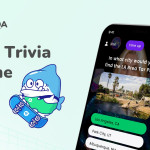
Source: Coindesk.com
The AEternals NFT project offers a crypto-native way to protect plots of land in the Amazon rainforest.

At first glance, “The AEternals,” a collection of 10,000 non-fungible tokens (NFT) focused on protecting the Amazon rainforest, sounds like it might belong in the business of planting trees to cancel out carbon dioxide (CO2) emissions.
In fact, the project is more about exploring what is possible with NFTs.
The recent NFT bull run, which was mostly about digital artworks and sports collectibles, is probably just a scratch on the surface of what’s possible with the technology. So-called utility NFTs are now expanding beyond things like decentralized finance (DeFi) and into enterprise uses like supply chain track-and-trace.
“We saw that NFTs could be anything, and became curious as to whether they could be more than one thing,” said Lucia Gallardo, CEO of Emerge, the project behind AEternals NFTs. “As well as being artful and collectible, could NFTs have utility? Can you gamify them and make them more interactive,” she said in an interview with CoinDesk.
AEternals NFTs, available via the Winklevoss-owned Nifty Gateway, offer the token holder a real-time connection to plots of virgin rainforest, said Gallardo.
In other words, if it happens to rain on your part of the forest, it rains on your NFT, Gallardo said.
The NFTs also grow and evolve over time, a process fueled by the owner’s engagement in game playing or by participating in social-impact community events or donating to a charity like Rainforest Partnership.
This adds an element of financial sovereignty into the NFT, as opposed to floor prices being set solely by some NFT platform, Gallardo said, because the owner decides how much to evolve their plot before selling it, and more evolved plots are valued differently.
However, rendering and minting three-dimensional, metamorphic NFTs on Ethereum consumes quite a lot of power.
Gallardo said the project has decreased its carbon emissions by 64 tons of CO2 and is also doing novel things like recycling the heat produced to render the collection to supply almost 41,000 hot showers to social housing units in France.
Might other base blockchain layers be a better fit?
“We do sometimes get asked why we went with Ethereum as opposed to some other protocol that’s touting mechanisms that are more environmentally friendly,” said Gallardo. “While we can’t completely cut all carbon emissions from this project we have done a huge amount to lessen them. In the end, we wanted a protocol that people who are new to this space could trust.”







